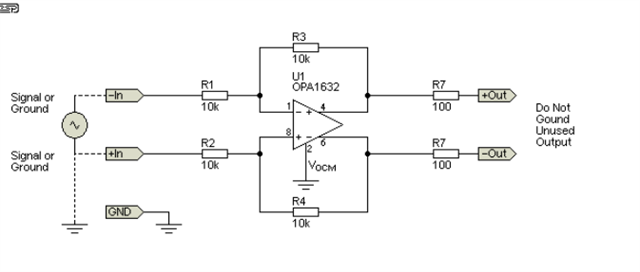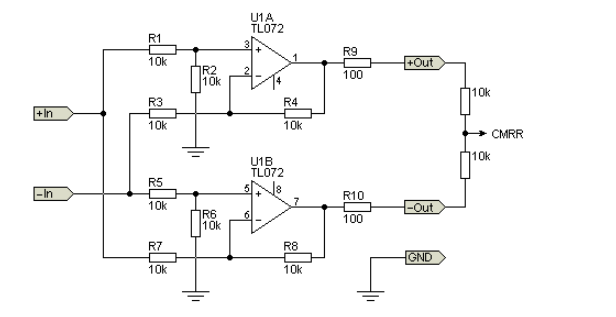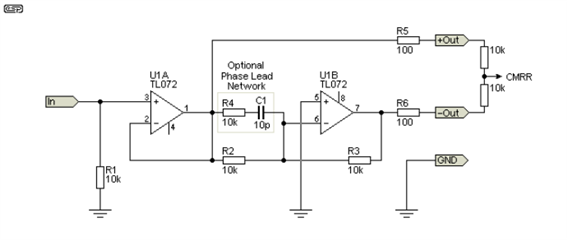Other Parts Discussed in Thread: OPA1678, , NE5532
Dear team,
In professional audio application, there are a lots of people using the FDA such as OPA1632 to do the conversion of single to differential or XLR line out. For example, driving the audio ADC or audio power amplifier (long wire maybe.) We both know that the FDA could reduce the common mode noise and improve THD because the output signal will be more symmetrical, but I am always about how much THD(dBc) could be improved and how much noise could be decreased comparing with the differential driving circuit achieving by 3 or 2 opamp (NE5532,OPA1678...).
1. Have you done any testing to compare the performance?if done, could you please share with me about how much performance could be improved (general number about THD,noise)?
2. Withour testing, is there any theory or skills to roughly calculate how much THD and noise can be improved if the differential signal circuit is achieve by FDA instead of opamp?
3. Is there any other benefit in the audio system if the FDA is applied? can these benefit be calculated roughly?



Best regards
Zhihong Huang

